Are you tired of messy coffee grounds cluttering your counter space? Inefficient waste disposal slows down service and creates a poor impression on customers. Choosing the right disposal solution can transform your workflow.
Knock boxes are portable, bin-like containers for discarding used coffee pucks, while knock drawers are space-saving units designed to fit under grinders. Boxes offer accessibility and visibility, while drawers provide better space efficiency, higher capacity, and improved airflow to prevent mold development.
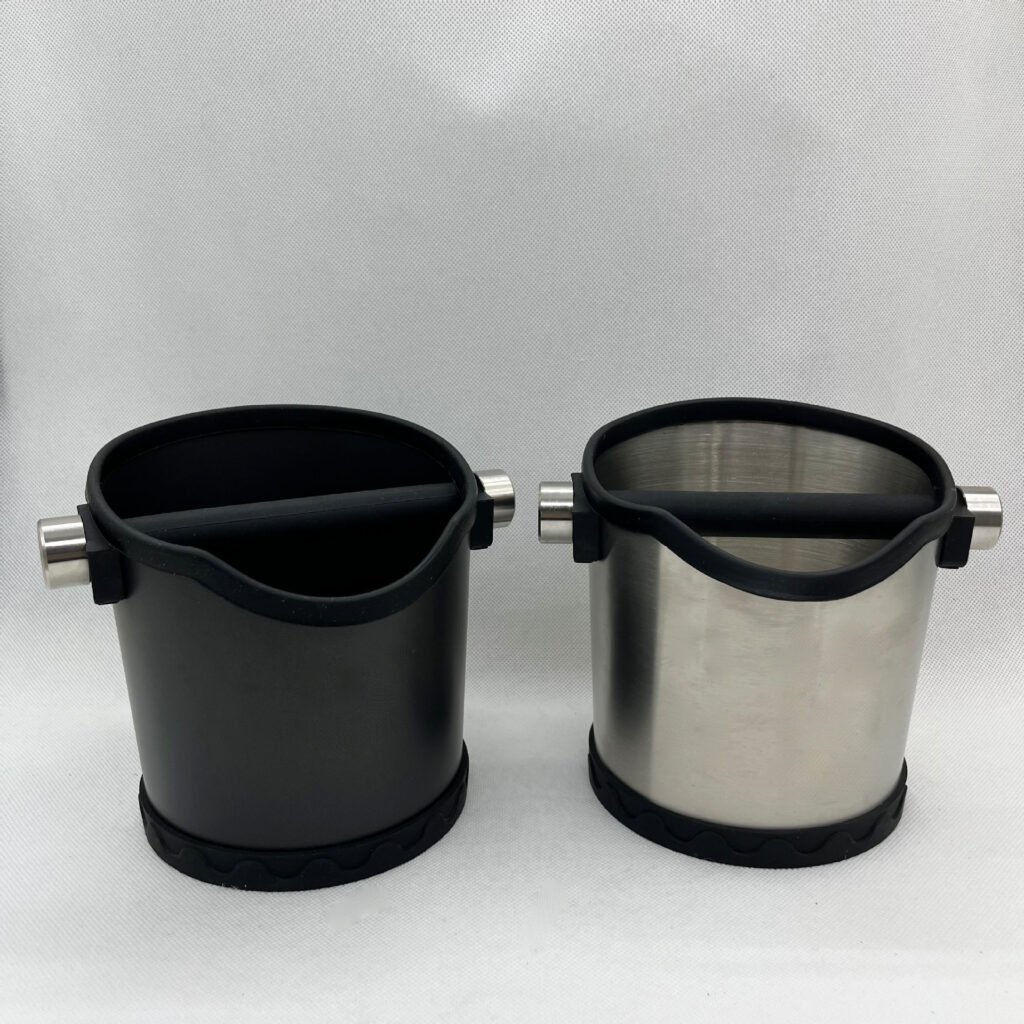
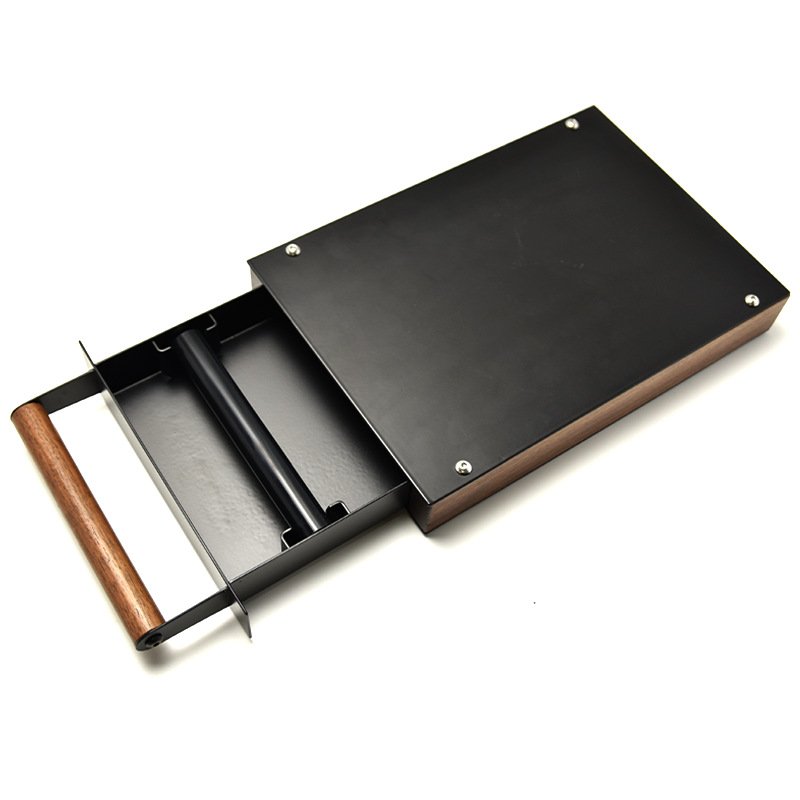
At our manufacturing facility in China, we've produced thousands of both knock boxes and knock drawers for cafés worldwide. I've seen firsthand how the right choice can significantly impact workflow efficiency. Let's examine the key differences to help you make the best decision for your business.
Space Efficiency and Placement: Where does each solution fit best?
Do you struggle with limited counter space in your busy café? Precious workspace disappears quickly with every accessory you add. The right waste disposal solution can save valuable real estate on your bar.
Knock drawers are specifically designed to fit underneath coffee grinders, utilizing otherwise wasted space. Knock boxes, resembling small trash bins, require dedicated counter space but offer the advantage of being easily relocated as needed throughout your workflow.
When considering your café layout, think about how each option integrates with your existing equipment. Knock drawers excel in tight spaces where vertical integration matters. They slide neatly under grinders, creating a seamless workstation that maximizes every square inch. This is particularly valuable in high-rent districts like those in Dubai or Abu Dhabi, where I've seen cafés transform their efficiency with smart space utilization.
Knock boxes, while requiring dedicated counter space, offer flexibility. They can be strategically placed between workstations or shared between multiple baristas. For cafés with changing layouts or those that prioritize workflow adaptability, this portability becomes an advantage. Consider your peak service periods – will baristas benefit from having disposal options in multiple locations, or is a fixed, space-saving solution more valuable? Your operational style should guide this decision.
Design Features: How do knock boxes and drawers handle waste differently?
Is your current disposal system causing messy countertops and scattered coffee grounds? Poor design leads to inefficiency and creates unnecessary cleaning work. The right features can keep your workspace professional and tidy.
Knock drawers typically feature cutouts on the top surface for sweeping loose grounds directly into the catch bin. Knock boxes focus on durability at the knock point, with reinforced bars designed to withstand thousands of impacts from portafilters.
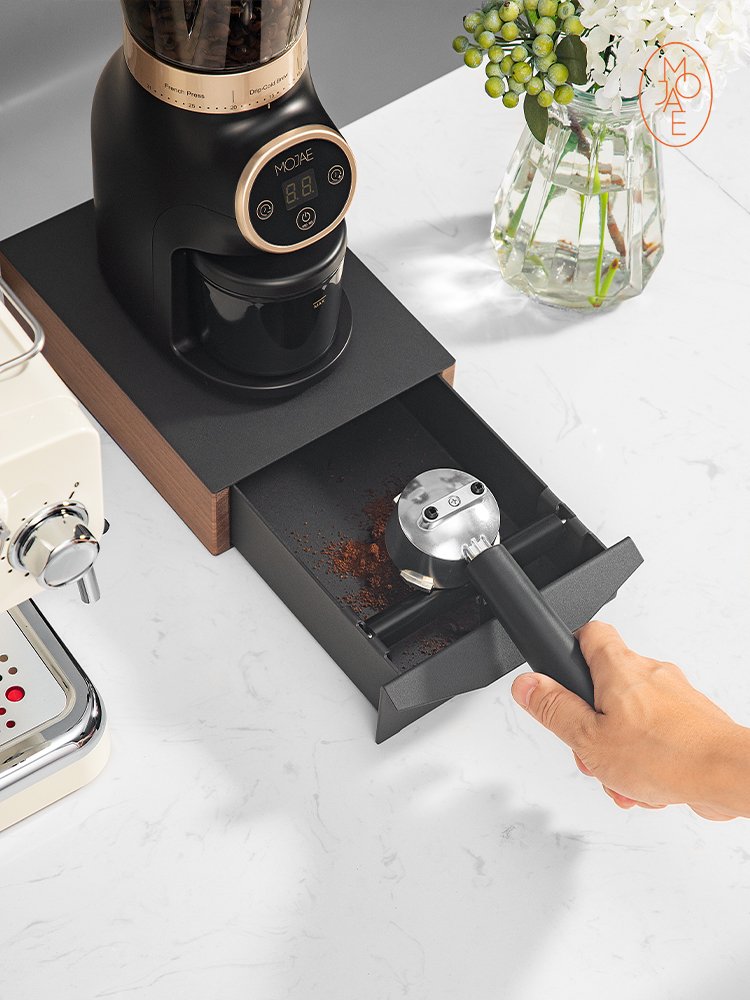
Looking deeper at design differences, knock drawers incorporate several thoughtful features that enhance workflow. Most quality drawers include a perforated top surface that allows small particles to fall through while providing a stable platform for dosing coffee. This dual functionality transforms what would be wasted space into a productive area. At our factory, we've refined these perforations to optimize ground collection while maintaining structural integrity.
Knock boxes prioritize simplicity and durability. The knock bar – the component that receives the most abuse – requires careful engineering. In our premium models, we use medical-grade silicone or rubberized coatings over stainless steel cores, providing the perfect balance of impact absorption and longevity. The height of this bar is critical: too high makes knocking awkward, too low leads to messy spillage. Through years of refinement, we've determined the ideal height is 2.5-3cm from the box bottom, allowing clean evacuation of the portafilter while containing grounds effectively.
Knock Bar Specifications Comparison
| Feature | SIF Premium Knock Box | SIF Professional Knock Drawer |
|---|---|---|
| Bar Material | 304 Stainless Steel with Silicone Coating | 316 Marine-Grade Stainless Steel |
| Impact Resistance | 50,000+ impacts | 100,000+ impacts |
| Noise Reduction | Moderate (65db) | Superior (45db) |
| Replacement Option | Yes, removable | Yes, modular system |
Capacity and Commercial Considerations: Which option suits your volume?
Does your café struggle with constantly overflowing disposal solutions? Frequent emptying interrupts workflow and creates inefficiency during peak hours. Matching capacity to your business volume is crucial.
High-volume coffee shops benefit from knock drawers that can hold 50+ pucks before requiring emptying. Traditional knock boxes typically accommodate 15-25 pucks, making them better suited for lower-volume operations or home use.

When evaluating capacity needs, consider your peak service periods. A busy café in a commercial district might produce 300+ espresso pucks during a morning rush. With a standard knock box, this would require emptying 12-20 times during your busiest period – a significant workflow disruption. Professional knock drawers, especially those designed for commercial use, can reduce this to 4-6 empties per shift.
The composition of waste also matters. In addition to compacted pucks, baristas often need to dispose of loose grounds from grinder purging and portafilter cleanup. Our testing shows that knock drawers with dedicated sweeping cutouts can reduce counter mess by up to 70% compared to traditional knock boxes. This translates to cleaner workstations and faster service.
For businesses with multiple espresso machines, the decision becomes more complex. Multiple knock boxes provide flexible disposal points but consume valuable counter space. A centralized knock drawer system might require baristas to move slightly farther to dispose of pucks but significantly reduces maintenance needs. In our work with large hotel chains across the Middle East, we've found that centralized, high-capacity systems typically win out in environments with 3+ group espresso machines.
Material and Construction: What should you look for in quality?
Are you replacing knock boxes too frequently due to poor durability? Inferior materials crack, dent, and deteriorate quickly under commercial use. Investing in quality construction saves money and frustration long-term.
Premium knock boxes and drawers utilize food-grade stainless steel, hardwood, or high-density polymers that withstand daily abuse. The best designs feature removable liners for thorough cleaning and replaceable knock bars for extended product life.
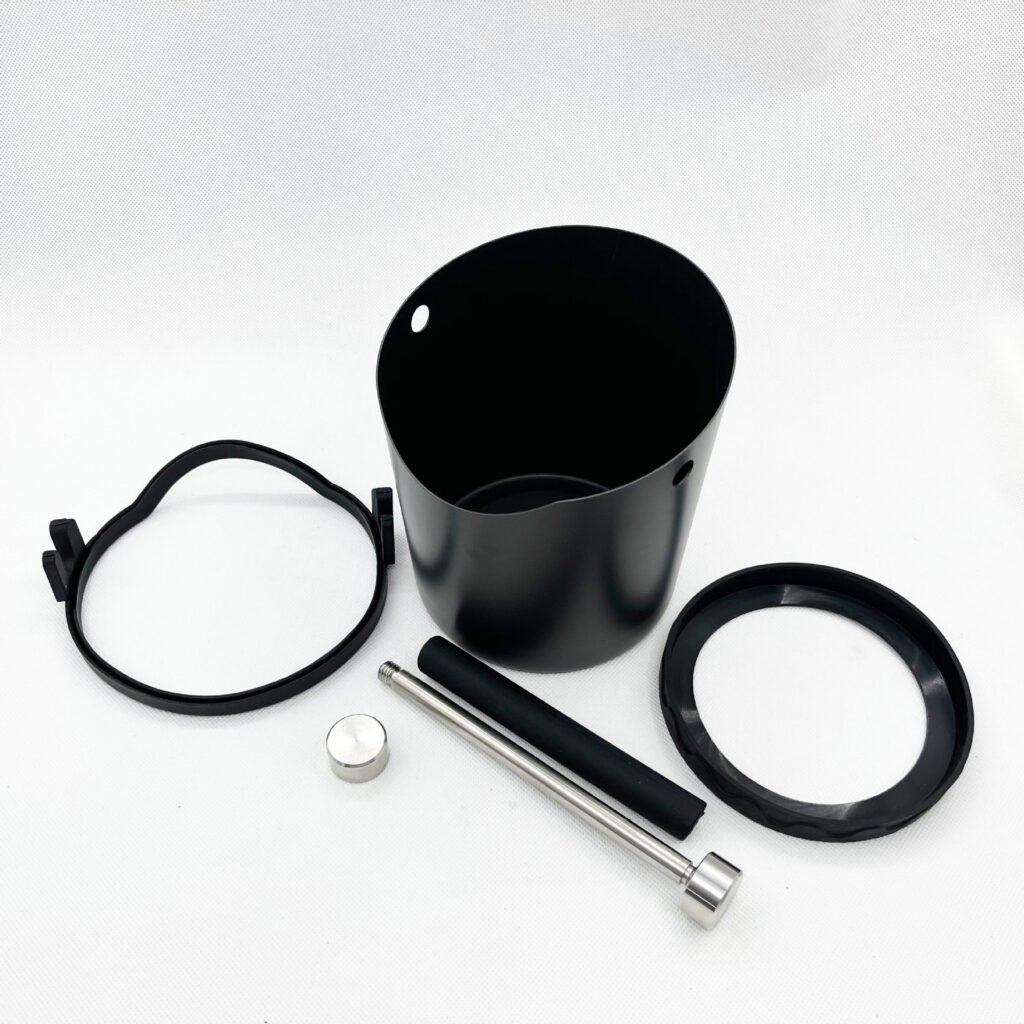
When examining construction quality, pay special attention to the joining methods. Welded stainless steel offers superior durability compared to adhesives or press-fitting. At our facility, we use precision TIG welding that creates nearly invisible seams while maintaining structural integrity. This process costs more but produces units that withstand years of commercial use without separation or leakage.
The knock bar mounting system deserves particular scrutiny. This component absorbs thousands of impacts and becomes the first failure point in lower-quality units. Our premium models use a floating mount system with vibration-absorbing bushings that isolate impact stress from the main structure. This engineering detail extends product lifespan by up to 300% compared to rigid mounting methods.
For knock drawers, the sliding mechanism quality dramatically affects user satisfaction. Ball-bearing slides rated for 50,000+ cycles ensure smooth operation even when the drawer is heavily loaded with wet coffee grounds. Budget units often use simple friction slides that quickly become sticky and difficult to operate, especially in humid café environments. The difference becomes apparent within weeks of installation and significantly impacts workflow efficiency.
Maintenance and Cleanliness: How do they compare for daily upkeep?
Is mold growth in your current knock box creating sanitation concerns? Poor airflow and difficult-to-clean designs lead to bacterial growth and unpleasant odors. Proper maintenance features protect both equipment and reputation.
Knock drawers often feature perforations that improve airflow, significantly reducing mold risks. Many models include removable components for thorough cleaning. Knock boxes typically offer simpler designs that are easy to rinse but may retain moisture longer.
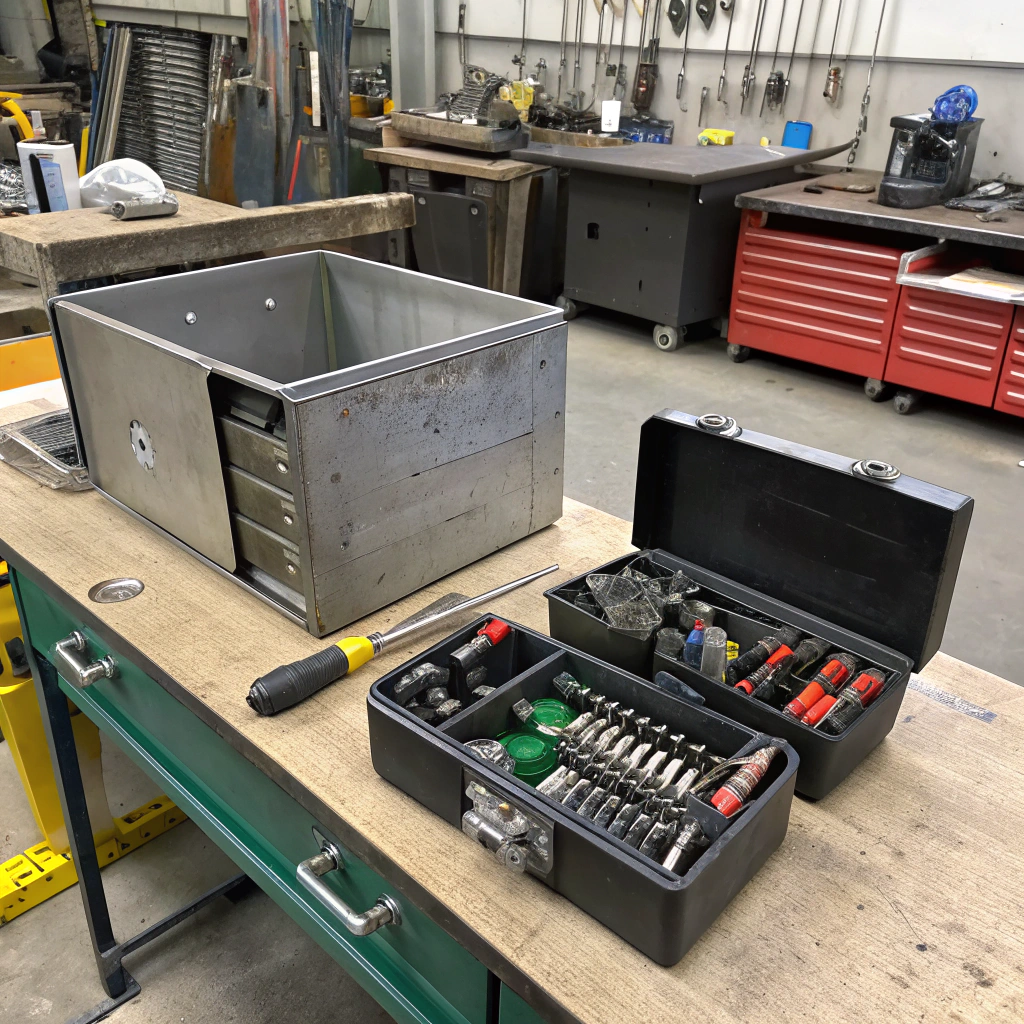
The maintenance difference becomes most apparent after several weeks of use. Used coffee grounds create an ideal environment for mold growth – they're moist, nutrient-rich, and often left in warm café environments. Our research with café partners in humid environments like Indonesia shows that traditional knock boxes[^1] without adequate ventilation can develop visible mold within 48-72 hours if not emptied and thoroughly dried.
Knock drawers designed with proper ventilation significantly extend this timeline. The perforated surfaces allow moisture to evaporate rather than collect at the bottom. Professional models feature removable catch bins that can be thoroughly sanitized in dishwashers or with commercial cleaning solutions. This design consideration dramatically reduces the daily maintenance burden on staff.
Beyond mold prevention, consider the ergonomics of emptying[^2]. Knock boxes typically require lifting and inverting to empty, which can be awkward with heavy loads of compacted grounds. Well-designed knock drawers feature removable bins that slide out horizontally, allowing for a more controlled emptying process that reduces spills and strain. For businesses concerned with staff injuries and workers' compensation issues, this ergonomic advantage can be significant over thousands of emptying cycles.
Conclusion
The choice between knock boxes and drawers depends on your specific needs for space efficiency, capacity, and workflow. Boxes offer portability and simplicity, while drawers save space and provide better organization. Your decision should align with your specific operational requirements and space constraints.
---
[^1]: Exploring how knock boxes work can provide insights into effective coffee waste management and hygiene practices.
[^2]: Learning about ergonomic designs can enhance workplace safety and efficiency, crucial for café operations.



